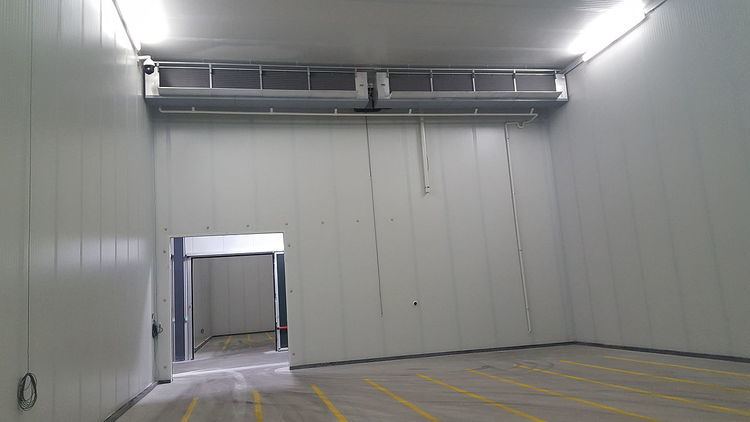 | ||
A controlled atmosphere is an agricultural storage method in which the concentrations of oxygen, carbon dioxide and nitrogen, as well as the temperature and humidity of a storage room are regulated. Both dry commodities and fresh fruit and vegetables can be stored in controlled atmospheres.
Contents
Dry commodities
Grains, legumes and oilseed are stored in a controlled atmosphere primarily to control insect pests. Most insects cannot survive indefinitely without oxygen or in conditions of raised (<30%) carbon dioxide. Such controlled atmosphere treatments of grains may take several weeks at lower temperatures (<15 °C). A typical schedule for complete disinfestation of dry grain (<13% moisture content) with carbon dioxide at approximately 25 °C is a concentration above 35%(v/v) carbon dioxide in air for at least 15 days. These atmospheres can be created either by:
Fruit and vegetables
The method is most commonly used on apples and pears, where the combination of altered atmospheric conditions and reduced temperature allow prolonged storage with only a slow loss of quality.
The long-term storage of vegetables and fruit involves inhibiting the ripening and ageing processes, thus retaining flavor and quality. Ripening is delayed by reducing the level of oxygen and increasing that of carbon dioxide in the cool cell so that the respiration is reduced. Under controlled atmosphere conditions the quality and the freshness of fruit and vegetables are retained, and many products can be stored for 2 to 4 times longer than usual.
